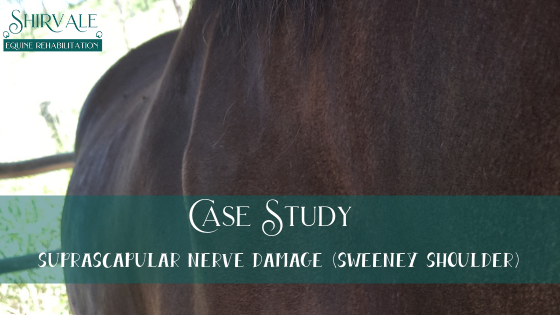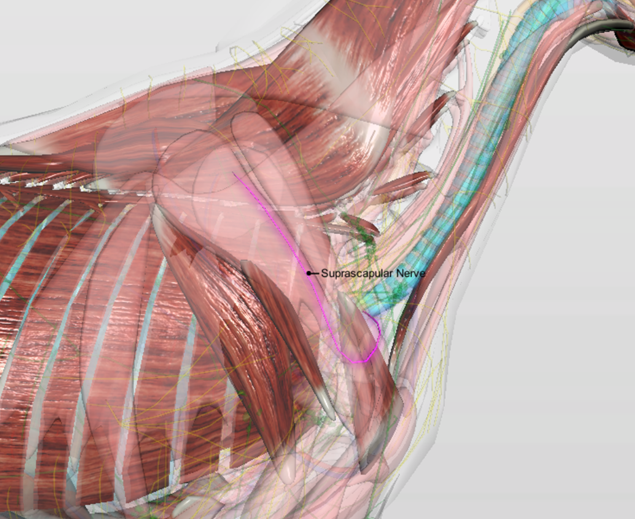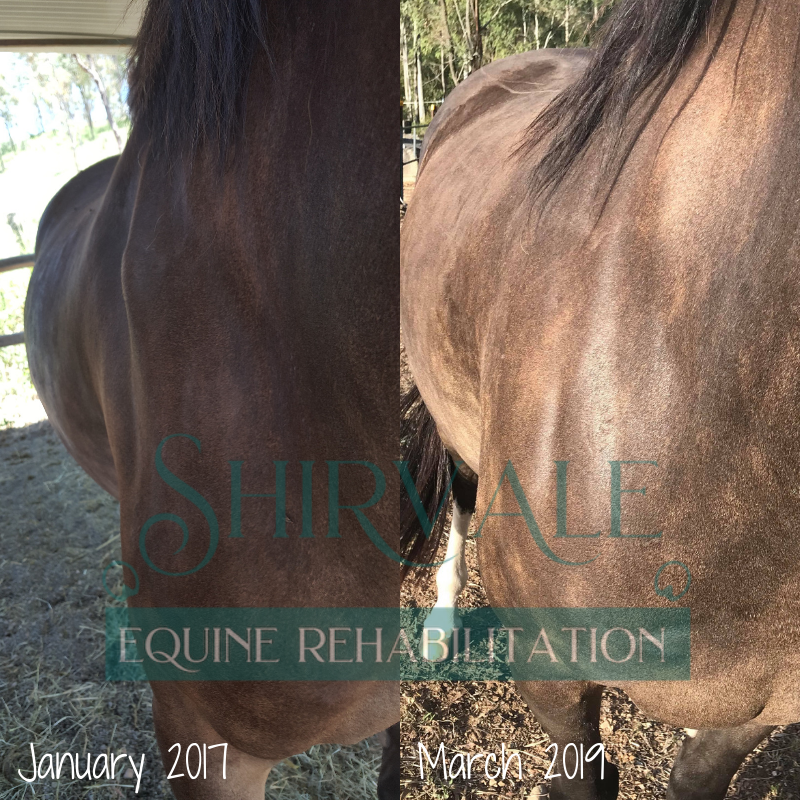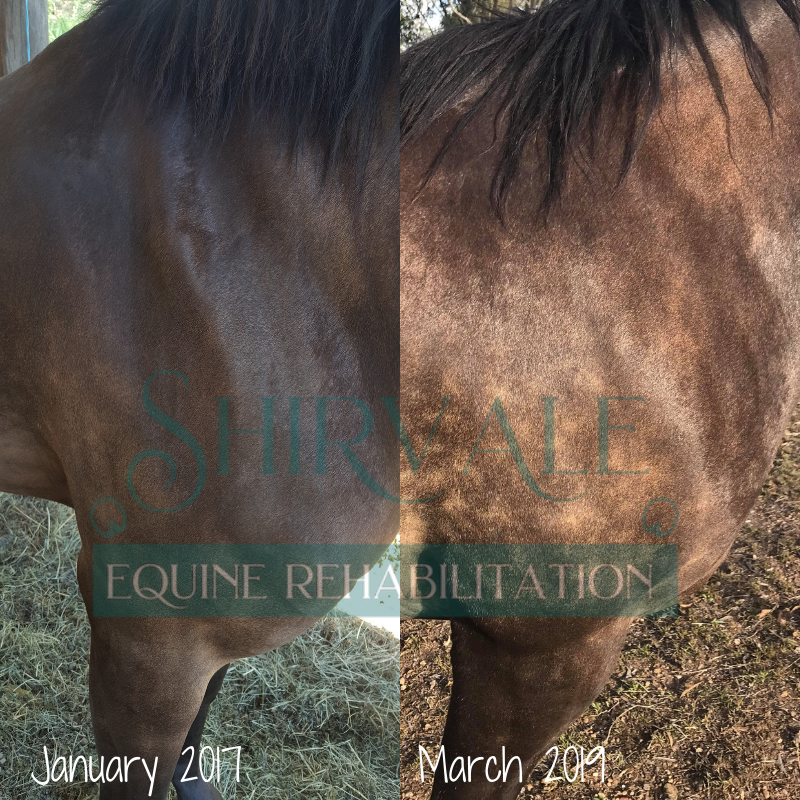
Case Study – Sweeney Shoulder
5yo gelding
Veterinary Diagnosis
- Trauma to the suprascapular nerve aka “Sweeney Shoulder”
- Presented with 5/5 lameness right fore, with subluxation of his right shoulder joint occurring.
What is Sweeney Shoulder?
When trauma occurs to the suprascapular nerve, innervation to the infraspinatus and supraspinatus muscles of the shoulder becomes compromised. Due to the compromised innervation, these two muscles begin to atrophy – this atrophy is what is commonly termed “Sweeney Shoulder”.
The supraspinatus muscle provides lateral support to the shoulder joint as well as playing a role in shoulder joint extension. The infraspinastus muscle acts like a lateral collateral ligament to the shoulder joint as well assisting in shoulder joint flexion.
Thus when suprascapular nerve innervation is impaired the horse can experience instability and dysfunctional movement of the shoulder joint.

Rehabilitation Process
A combination of therapies were used to:
- stimulate the regeneration process of the damaged suprascapular nerve.
- keep the infraspinatus and supraspinatus muscles activating to prevent atrophy.
- Prevent mechanical laminitis in the opposite forelimb.
- Maintain healthy joint and muscular function throughout the rest of his body.
We managed to hold off any atrophy occurring until the 3 week post injury mark, when unfortunately muscle wastage did begin. However over the next 3 months we managed to regain nerve function, which resulted in the supraspinatus and infraspinatus muscle development & shoulder stability returning. We could then begin a more strenuous remedial exercise program.
- The remedial exercise program was developed to encourage correct activation patterns of infraspinatus and supraspinatus dynamically.


Where is he now?
Marlo has returned to full ridden work, with continued healthy function of both the supraspinatus and infraspinatus muscles (& no atrophy!).
Jacinda from Shirvale Equine Rehabilitation was essential to the recovery of my gelding Marlo.
Marlo suffered a paddock accident in Dec 2016, he was extraordinarily lame straight away. After vet assessment with multiple X-rays, he was diagnosed Sweeney Shoulder.
Unfortunately the prognosis wasn’t great, there’s not a great deal of successful case studies out there to waylay my fears.
Jacinda was my first point of call for his extensive rehab, having used her before for all my boys body work and to successfully treat Marlo’s stifle lock, I was confident that if anyone could get us through this, it was her.
It has by no means been an easy 12 months, but Jacinda’s support, knowledge and skill has got him from being lame with full subluxation of his leg with complete atrophy of the muscle to now being almost fully recovered, being ridden and happy healthy horse.
I firmly believe, that without Jacinda on our team, Marlo would have not made this complete recovery from such a debilitating injury to become a riding horse once more. I can’t thank her enough.
